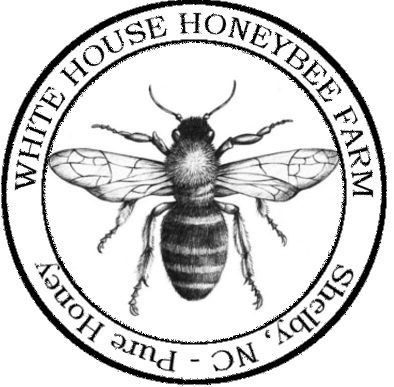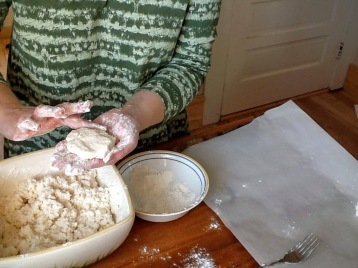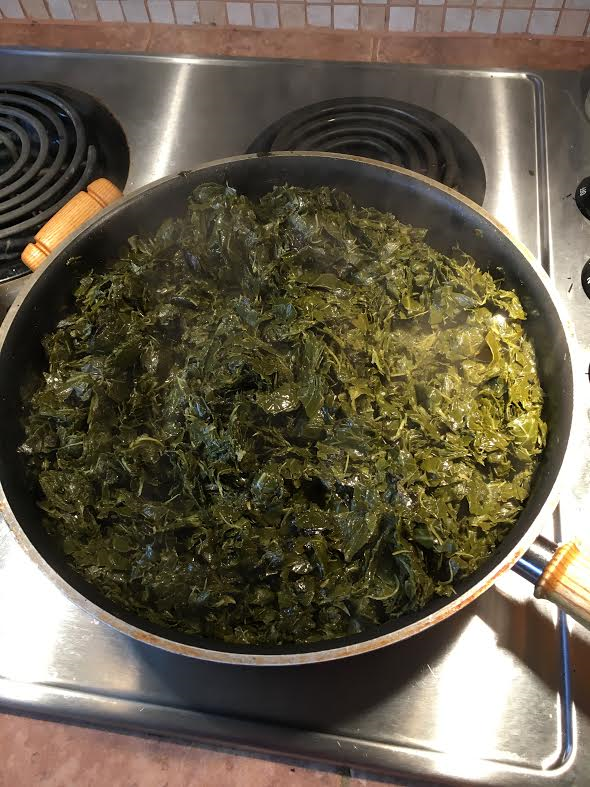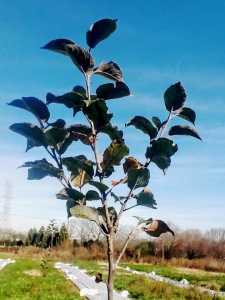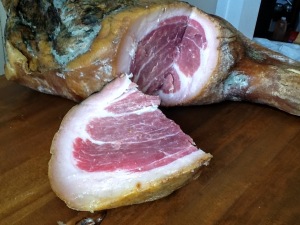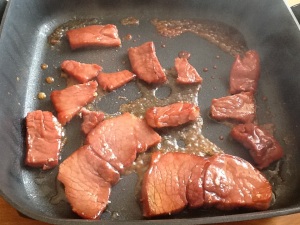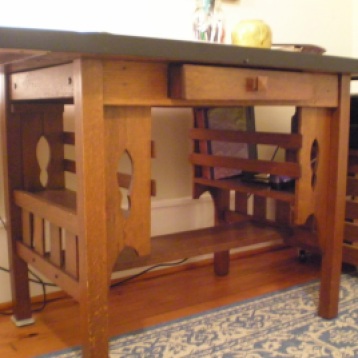Bread is one of my biggest weaknesses, and that weakness can be narrowed down to buttermilk biscuits. Amazingly, the same set of ingredients can be used to turn out many different styles of buttermilk biscuit! Each biscuit maker I know has a slightly different style to baking, which results in a different tastes and textures. My mom rolls her dough and makes thin, crispy biscuits. My mother-in-law hand forms her biscuits and shoots for dark, golden tops.
I make my biscuits like my great-mommaw Ruth–I do hand formed biscuits. (I’ve never mastered using a rolling pin, probably because I like a stickier biscuit dough.) I’ve been told that our biscuits are similar in taste and texture.
I like to start with the basics: buttermilk, flour, baking powder, salt, and crisco. I know crisco is sometimes considered a food no-no, but I’ve tried the original recipe which uses lard and it just makes too dense of a biscuit for me.

I start with 2 cups of flour in my bowl. I add a pinch of salt and a tablespoon of baking powder. If you are using self rising flour, the baking powder can be optional – unless you want a really fluffy biscuit. Add 1/2 cup of crisco, pinched apart into small pieces. Blend all ingredients together with a fork or pastry cutter.
I have seen the recipe where the lard/crisco is replaced with butter. I have not tried this version before – but I think I’ll try it out next week just to see what happens.

After the dry ingredients and fat are well blended, add in 1 cup of buttermilk. I like to use whole buttermilk, but low fat works just as well. Stir dough until sticky and all of the flour is worked in. Don’t over stir the dough or you’ll end up with biscuits that are dense instead of flaky.
Take an extra hand full of flour and put it in a bowl – be sure to dust your hands and the top of the biscuit dough. As you form each biscuit, re-dust your hands in the extra flour – this will keep the dough from getting stuck on your hands.
To hand form your biscuits, pick up a small blob of dough. I usually go with a blob that is slightly larger than a golf ball. I like to lightly pat my dough into a basic biscuit shape, then lay it out on the pan.
I like to finish off my biscuits with a dab of buttermilk on the tops. It adds a little extra flavor and it keeps the tops from getting too brown (I like really light biscuits the best). I’m not sure how common adding buttermilk to the tops is. Its just something that I picked up from my mom, and she picked it up from my dad’s mom.
Pop them in the oven on 450 for about 11 or 12 minutes – then you are good to go!
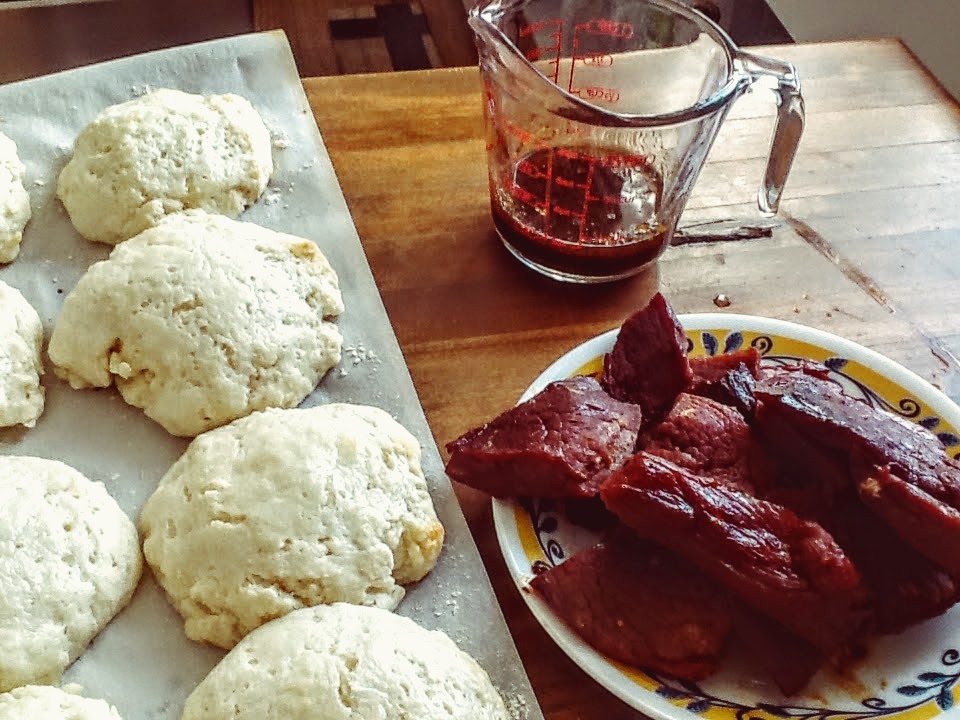
Buttermilk Biscuit Recipe:
2 cups flour
1 cup buttermilk
1/2 cup crisco
1 tbs baking powder
pinch of salt
Oven – 450
Time- 11 – 12 minutes
